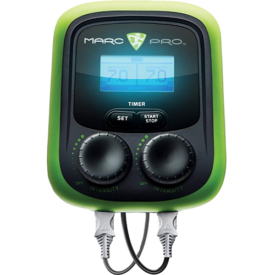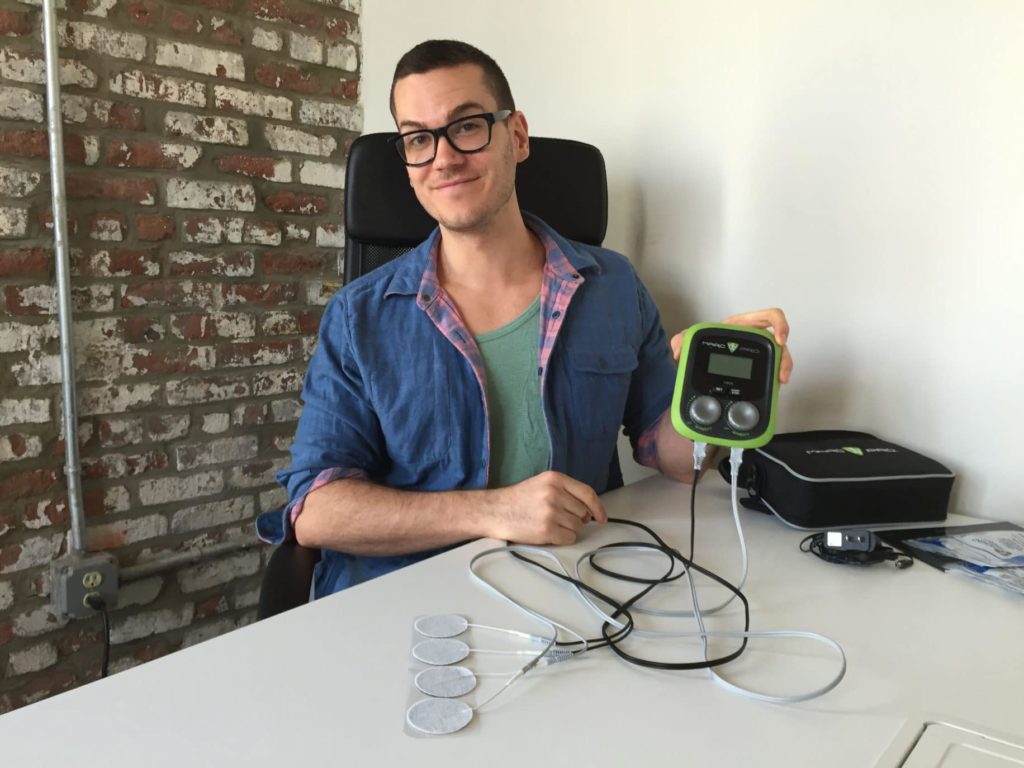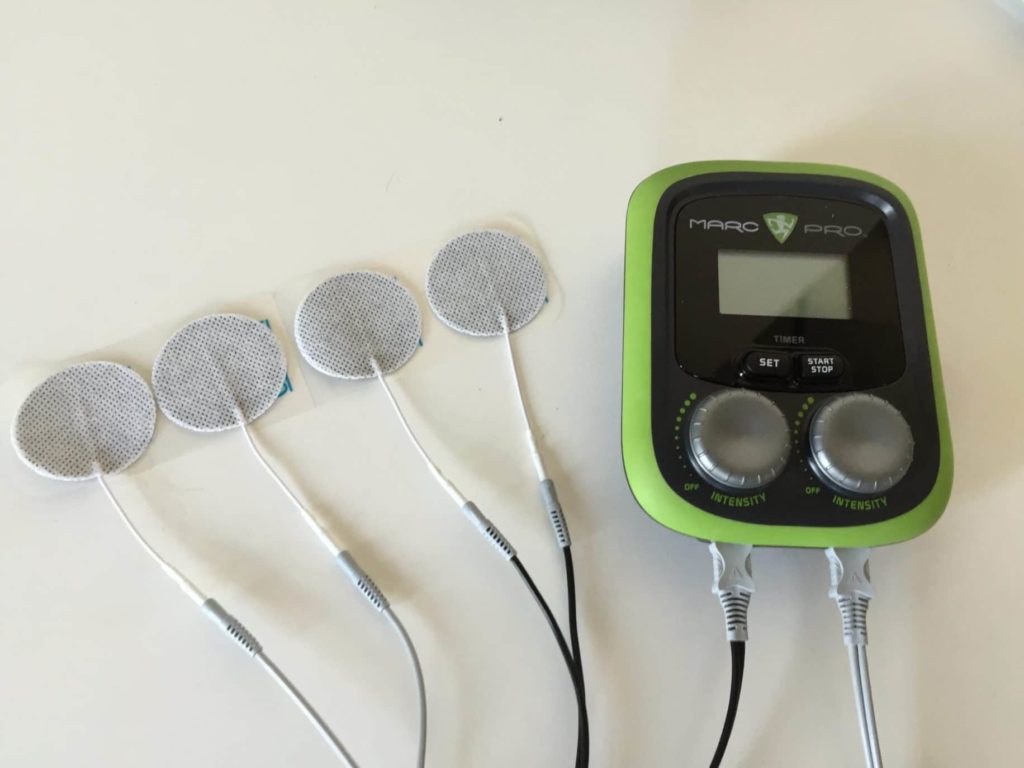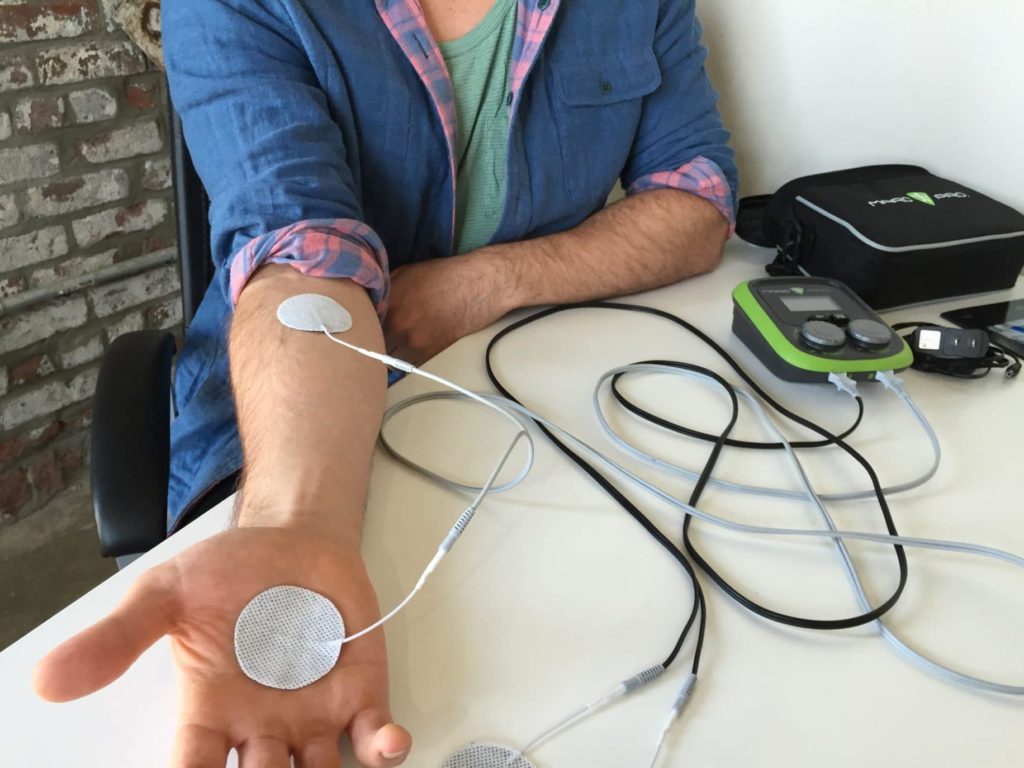Marc Pro — an acronym stands for “Muscle Activated Recovery Cascade” — is one of the biggest names in electronic muscle stimulation (EMS) devices. Based in California, the brand is used by a ton of athletes in a wide variety of sports including triathletes, weightlifters, baseball, and elite level CrossFit® athletes. In this article, we review the Marc Pro device on usage, effectiveness, and more.

What Does Marc Pro Do?
Their site claims that “using Marc Pro after any training session or activity will greatly improve your recovery allowing you to feel better, perform better, and reduce the chance of injury.”
It aims to accomplish this feat by sending electric pulses through the muscles: you attach one to four electrodes to your body and for 30 minutes to an hour, you stimulate your muscles into contracting and relaxing. The idea is that it improves blood flow to the area, brings nutrients to your muscles, and flushes out waste products.
One thing that’s different about Marc Pro is that it uses a “dynamic decaying waveform,” which basically means that instead of just contracting the muscle at full power and then releasing it, it contracts and releases more slowly and has a longer pulse duration than other models. That means, according to Marc Pro, that it recruits more muscle and produces less fatigue than competing brands.

My Experience Using Marc Pro
I tried the Marc Pro for a few weeks, and the first thing that struck me was that it doesn’t have any program variety. A lot of other EMS devices have different settings: warming up, recovery, relaxation, potentiation, and so on. Marc Pro is very simple; you hook yourself up and crank the electricity to anywhere from 0.1 to 9.0. I found that with larger muscle groups I could, after a few minutes, work my way up to 7 or 8. Smaller muscle groups like forearms and feet I kept a little lower.
So there’s no variety of protocols, but Marc Pro does suggest putting the electrodes in different places to have different effects. For example you can put it on your quad, calf, and feet for a “single leg whole focus” or just place the electrodes at the groin and the sole of your foot for a “global leg flush.” I would have liked a little more information as to the differences between protocols like this.

First and foremost, Marc Pro is a recovery device. That means you’re not meant to bring it with you to use while you’re working out. (Though I will point out that it’s pretty portable: the charging station is light and comes with a neat carry bag, and it could hold hours and hours worth of sessions.) So one of the ways I tested its effectiveness was to do a super high volume, mostly unilateral leg workout and then attach the device to the quads and calves of one leg. The idea was to test if it became any less sore than the other leg. While it didn’t totally eliminate DOMS, I did find it to noticeably decrease the soreness.

What I found it was really useful for, though, was high frequency workouts. If you give each body part a week to recover — if you’re a “leg day” and “back day” type exerciser — you might not need a Marc Pro. But if you hit the same body part multiple times a week, your performance may well improve if you fit in a Marc Pro session to help draw blood and nutrients to the muscles. I try to include a squatting or lunging type movement in all of my workouts and I found that by using Marc Pro afterward, it was easier to train legs again the next time I went to the gym.
Marc Pro Price
The basic Marc Pro unit costs $650. They also sell the Marc Pro Plus for $950, which also has a function for reducing chronic pain — when pain goes “beyond soreness,” they say.
That’s not the cheapest EMS device, but it’s not the most expensive, either. Marc Pro writes on their site that they know they’re not the cheapest model, but that their “dynamic decaying waveform” — the slower pulses — make it stand out in the market and make it worth the price.

The Takeaway
Although it has multiple uses, Marc Pro is refreshingly simple for an EMS device: you hook it up and crank the electricity. I liked that a lot, particularly after the difficulty I had working out how to use some of its competitors. But if you like to have ten different programs to use then you might be disappointed by Marc Pro’s simplicity.
It’s also pretty light and unlike wireless models, the electrodes are nice and light as well, which makes them less awkward to wear and less prone to falling off.
The main sticking point for some could be the price: there are other EMS devices that appear to do the same thing for less money. But if Marc Pro is to be believed, their “dynamic decaying waveform” method of stimulating muscles is worth extra cost and will improve your recovery and reduce pain and fatigue better than competitors. If it does, Marc Pro could be a good fit for you.
